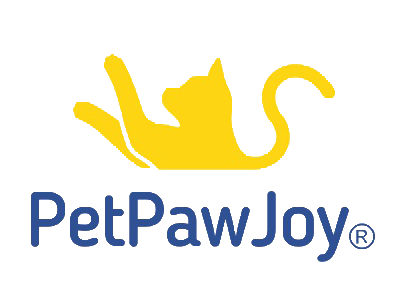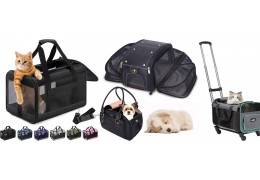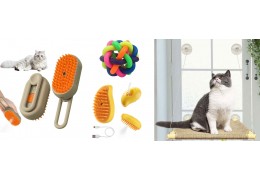In today’s fast-growing pet industry, understanding and preparing for pet product peak season, tracking pet wholesale...
Shipping Pet Products Internationally: What You Need to Know
As demand for pet products rises worldwide, more brands and manufacturers are moving into international markets. Whether you’re looking to export pet goods, streamline pet product logistics, or understand the ins and outs of shipping pet supplies EU, there’s never been a better time to take your pet products global. But with that opportunity comes complexity: customs, certifications, packaging, carrier selection, and trade compliance all affect your bottom line. This guide will walk you through everything you need to know to ship pet products internationally, safely, and profitably.
Why Go Global with Pet Products?
The global pet market is booming—and the EU is one of its most lucrative regions. According to 2026 projections:
• Over 90 million households in Europe own a pet
• The EU pet industry is valued at over €27 billion
• Imports of premium pet goods are rising steadily post-COVID
For factories, OEM suppliers, and private-label pet brands, this means international expansion is no longer optional—it’s essential.
If you're planning to export pet goods to new markets, especially Europe, you’ll need a clear understanding of pet product logistics and the regulations involved in shipping pet supplies EU.
Key Components of International Pet Product Logistics
Successful pet product logistics starts long before the shipment leaves your factory. It includes:
1. Product Classification
Use the correct HS code (Harmonized System code) to classify pet products like leashes, toys, bowls, and treats.
• Example: HS Code 4201.00 for leather dog leashes
• Example: HS Code 3926.90 for plastic pet toys
The right classification determines your duties, taxes, and import paperwork when you export pet goods.
2. Labeling & Language Requirements
When shipping pet supplies EU, you must comply with labeling standards in local languages—especially for products like:
• Food and treats (ingredient lists and expiration dates)
• Toys (material disclosure and safety warnings)
• Grooming tools and cleaning agents (usage and care instructions)
Understanding Customs and Duties When You Export Pet Goods
Every country treats pet products a little differently. When you export pet goods, be ready for:
EU-Specific Requirements:
• CE or REACH certification (for plastic, rubber, textile goods)
• Declaration of Conformity (for electronic pet products)
• Tax ID (EORI number) if you’re the importer of record
USA Requirements:
• FDA approval (for pet foods and chews)
• ASTM standards for toys and accessories
• Country of origin labels
Having a customs broker on your side helps simplify pet product logistics and prevents unexpected delays or fines.
Choosing the Right Incoterms for International Shipments
Incoterms define who pays for what during the shipping process. The most common terms used in shipping pet supplies EU are:
Incoterm | What It Means | Who Pays for What |
FOB (Free on Board) | Seller delivers to port of origin | Buyer pays freight, insurance, customs |
CIF (Cost, Insurance & Freight) | Seller covers transport to destination port | Buyer pays import duties and fees |
DDP (Delivered Duty Paid) | Seller handles everything to final delivery | Best for buyer convenience but riskier for seller |
When you export pet goods, make sure your contracts clearly define Incoterms to avoid disputes.
Choosing a Freight Method: Air vs. Sea vs. Rail
Your choice of transport impacts cost, lead time, and handling—critical parts of pet product logistics.
Air Freight
• Fast (5–10 days door to door)
• Expensive, especially for bulky items like beds or feeders
• Ideal for urgent samples or lightweight, high-value goods
Sea Freight
• Economical for bulk shipments
• Lead time: 25–45 days depending on route
• Perfect for large wholesale orders when shipping pet supplies EU
Rail Freight (China to EU)
• Mid-cost and mid-speed alternative
• Environmentally friendlier than air
• Reliable for central European destinations
Use consolidated containers to lower cost per unit when you export pet goods.
Packaging That Meets International Standards
Proper packaging is not just about branding—it’s essential for regulatory approval and protection during transit.
For EU Market:
• Multilingual instructions
• Recyclable packaging preferred
• Clear labeling of material content and safety instructions
For Durable Shipping:
• Strong inner cartons and moisture barriers for sea freight
• Polybags for small accessories like collars or tags
• Avoid packaging with untreated wood to pass EU phytosanitary controls
Remember: shipping pet supplies EU often means crossing multiple borders, so packaging must be robust and compliant
Inventory Planning for International Distribution
To build a smooth global supply chain, accurate inventory planning is critical.
Tips for Efficient Pet Product Logistics:
• Forecast sales per region based on past data
• Create buffer stock in major hubs (e.g., Rotterdam, Hamburg, Barcelona)
• Work with 3PL providers that specialize in shipping pet supplies EU
A flexible fulfillment strategy helps avoid stockouts and keeps your customers happy across borders.
Required Documents for International Shipping
Here are the must-haves when you export pet goods:
• Commercial Invoice
• Packing List
• Bill of Lading (B/L) or Air Waybill (AWB)
• Certificate of Origin
• Import licenses or permits (as required by product type)
Missing documents can delay your shipment or result in fines—especially when shipping pet supplies EU with customs-sensitive products like food or supplements.
Partnering with a Global Freight Forwarder
To simplify pet product logistics, consider using a freight forwarder with experience in your category.
What to Look For:
• Proven experience in shipping pet supplies EU
• Familiarity with customs for textiles, plastics, electronics, or treats
• Online tracking and real-time communication
• Door-to-door or port-to-warehouse delivery options
A strong logistics partner makes it easier to export pet goods without unexpected delays or compliance issues.
Country Spotlight: Top EU Markets for Pet Product Imports
Here are the best EU countries to target when shipping pet supplies EU:
Country | What They Import Most | Logistics Tip |
Germany | Grooming tools, toys, feeders | Use Hamburg or Bremen ports |
France | Luxury leashes, apparel | Prioritize eco-packaging |
Netherlands | Smart tech, health products | Use Rotterdam for central access |
Spain | Treats, pet beds, collars | Factor in multilingual labeling |
Customizing your strategy per country helps you penetrate the EU market faster and more efficiently.
Avoiding Common Shipping Mistakes
When you’re learning to export pet goods, avoid these rookie errors:
1. Wrong product classification → leads to overpaying tariffs
2. Inadequate packaging → causes damaged goods
3. No buffer time → hurts retail launch schedules
4. Using low-rated forwarders → results in miscommunication or delay
5. Forgetting trade compliance → especially for shipping pet supplies EU
Each of these mistakes can erode profit or delay your international growth.
Building Long-Term Success in Pet Product Exports
Here’s how successful brands scale their pet product logistics globally:
• Partner with certified factories that understand international compliance
• Offer both FOB and DDP options to accommodate different retailers
• Build fulfillment hubs or 3PL partnerships in target markets
• Train staff on documentation, customs, and Incoterms
• Track KPIs: shipping cost per unit, on-time delivery %, return rate
Whether you're a factory launching your own pet brand or an OEM supplier looking to export pet goods at scale, mastering these logistics is the key to sustainable growth.
Final Thoughts: Scale Smart, Ship Smarter
Expanding into global markets isn’t just about product—it’s about precision. From documentation and Incoterms to packaging and freight strategy, every step of pet product logistics affects your success when you export pet goods or focus on shipping pet supplies EU.
Want help setting up your international shipping strategy? Our team works with clients across 30+ countries, offering full support for logistics planning, regulatory compliance, and B2B onboarding.
Contact us today to simplify your international pet product exports—from prototype to port.












